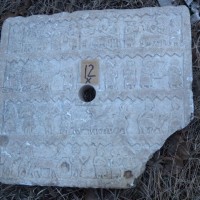
Early Medieval, Roman Structures Found Close to England-Wales Border at UK’s Wrexham

Archaeologists are excavating the Early Middle Ages and Roman settlement site at Wrexham, Wales, close to the border with England, in the UK. Photo: University of Chester / Newsweek
An “extremely rare” discovery of structures from the early medieval period and remnants of a Roman settlement has been made in Wrexham, a city and county in northeast Wales, close to the Anglo-Welsh border.
This revelation came to light during an archaeological excavation this summer, highlighting Wrexham’s significant historical depth within the United Kingdom, Newsweek points out in a report.
The Roman Empire, which conquered most of Britain including Wales in the 1st century AD, established the region as part of the Roman province of Britannia, lasting until the end of the 5th century.
The Wrexham site’s proximity to the Roman tile and pottery works in Holt, Denbighshire County, suggests a dense pattern of historical activity, contradicting previous assumptions of an archaeological void in the area surrounding the Roman fortress of Chester.
Chris Matthews, a Heneb project archaeologist and geologist, noted the importance of these findings.
“The Roman settlement is part of a growing pattern of archaeological activity in an area where, aside from military centers, there had been an assumed absence,” he told Newsweek.
He further elaborated on the misconception of the area as a mere ‘hinterland,’ attributing this to historical neglect rather than a true absence of archaeological evidence.
During the excavation, which involved researchers from the University of Chester and the UK government’s Portable Antiquities Scheme, significant Roman-era features and materials were unearthed.
These included a trackway, building materials, ceramics such as a stamped legionary tile, fragments of a brooch, and other remains that pinpoint the location of a Roman settlement.
Additionally, the excavation brought to light structural remnants of two rectangular timber-built structures from the early medieval period, likely dating between the 6th and 11th centuries AD.
These structures, believed to be thatched longhouses or communal dwellings, are a rare find in Wales, particularly in the northeast region.
“The early medieval activity is extremely rare because this type of archaeology does not survive well, being largely simple timber and thatch buildings. There are very few examples of this type of timber longhouse in Wales, and again, an almost complete absence in northeast Wales,” Matthews explained.
The lack of datable material culture within these early medieval structures is characteristic of the period, as noted by Matthews.
The use of perishable materials like wood, leather, and hide, unlike ceramic, means these items seldom survive in the archaeological record.
The potential of the Wrexham site first emerged during initial investigations by the Holt Local History Society (HLHS) and a local metal detectorist between 2013 and 2017, which uncovered a significant quantity of Roman remains.
“The original investigators were not able to reach a solid conclusion but successfully recovered a large assemblage of artifacts,” Matthews recounted.
This prompted further investigation by Heneb in collaboration with the University of Chester, driven by findings initially deposited with the Wrexham Museum.
The current excavation has significantly expanded the understanding of the site, revealing a clear outline of a gridded Roman settlement and road system through geophysical surveys, alongside the distinct early medieval structures.
Caroline Pudney, a senior lecturer in archaeology at the University of Chester, expressed excitement about the dual historical layers uncovered.
“We were very hopeful of finding evidence of Roman life due to previous discoveries and geophysical surveys in the area, not to mention the presence of the legionary tileworks a few fields away, but did not expect our excavations to uncover what is believed to be an early medieval longhouse,” Pudney explained.
Although no definitive Roman structures have been positively identified yet, Matthews remains optimistic.
“But we think that’s because we are digging into the wrong part of the settlement,” he said.
He also speculated on the nature of the Roman occupation, suggesting the site’s proximity to the Holt tileworks might indicate it served as a satellite settlement for workers.
The excavation team is committed to continuing their work to uncover more about the Roman occupation and the early medieval period.
“There is still a lot to do, we need to get a better image of the Roman occupation and the type of structures being used. This would help confirm what type of community was living here. Further analysis of finds assemblage which will take place as part of our post-excavation process will also aim to answer some of these questions,” Matthews concluded.
***
DID YOU KNOW that there is now an entire ancient nation made up of archaeologists?
It exists against all odds in “The Mudbrick Swamp,” a fantasy book by Ivan Dikov – Volume 1 of the “Rodiniya’s Reason” fantasy series!
BUY ‘THE MUDBRICK SWAMP,’ Book 1, Volume 1, of the RODINIYA’S REASON fantasy series HERE!












